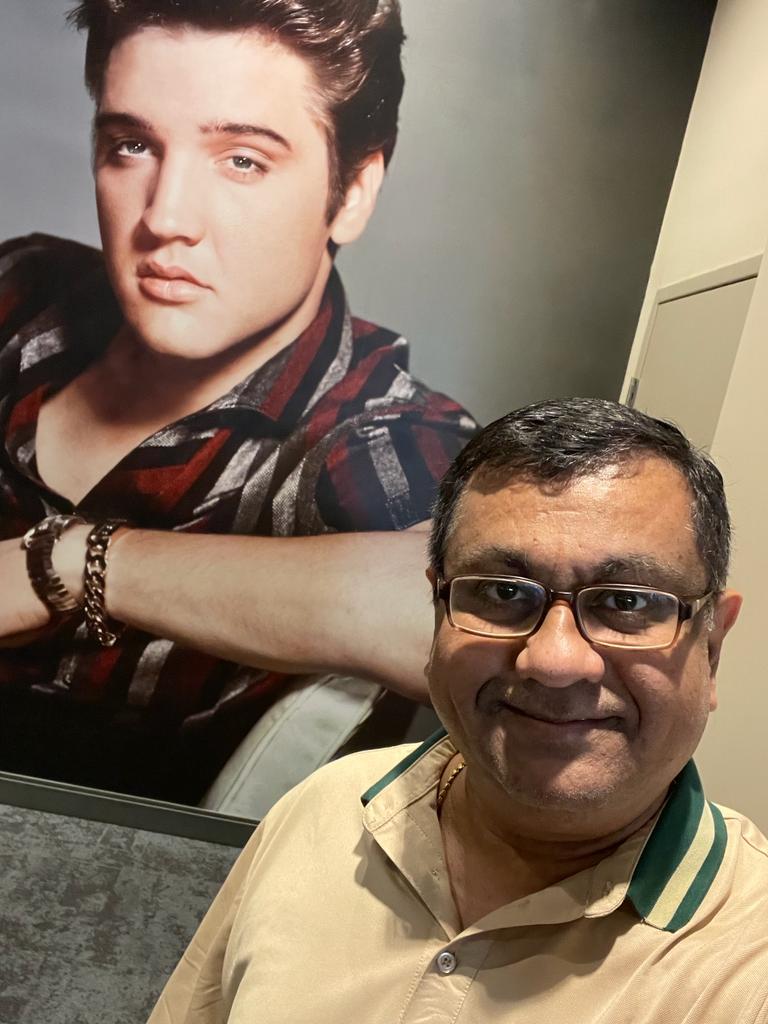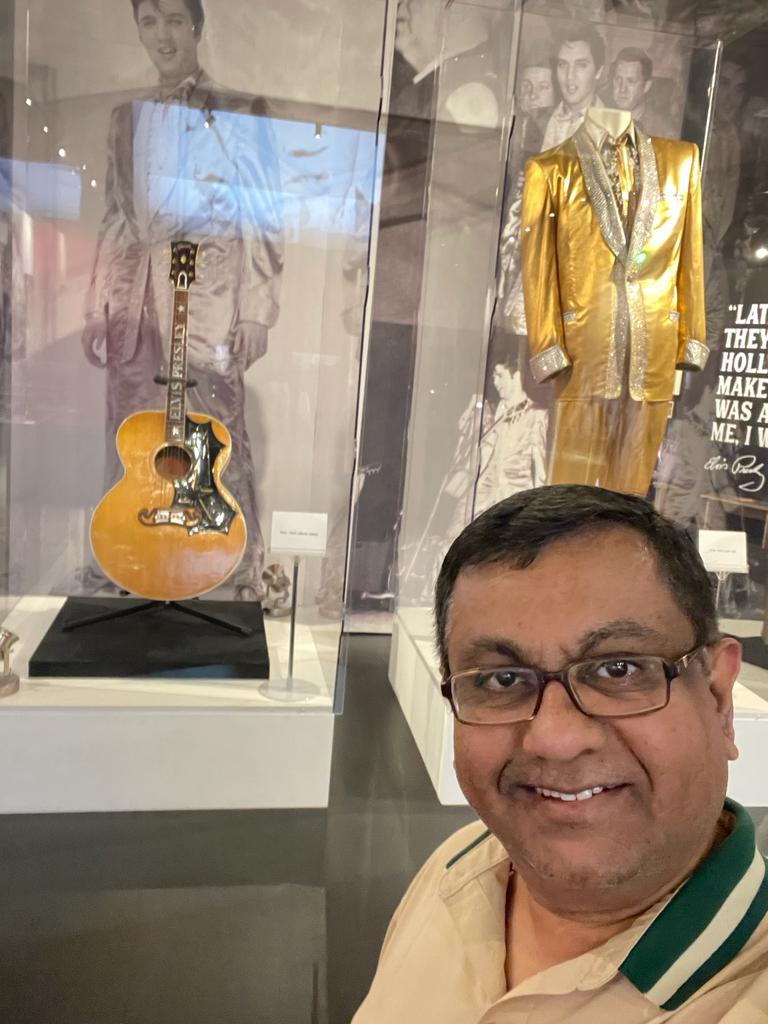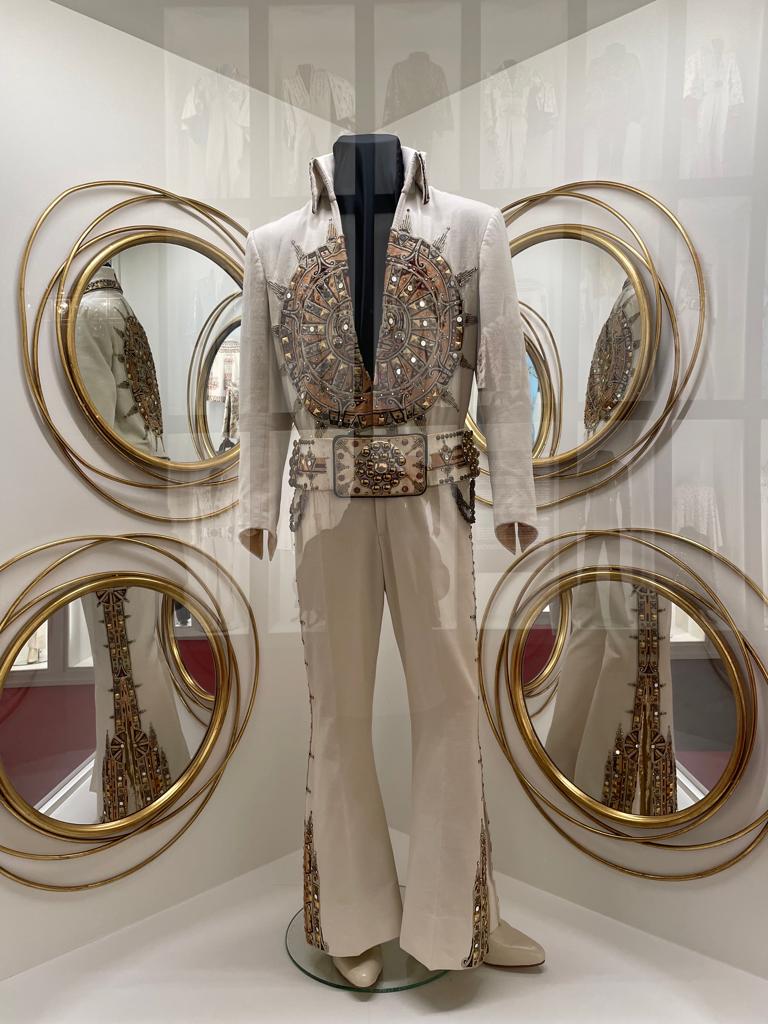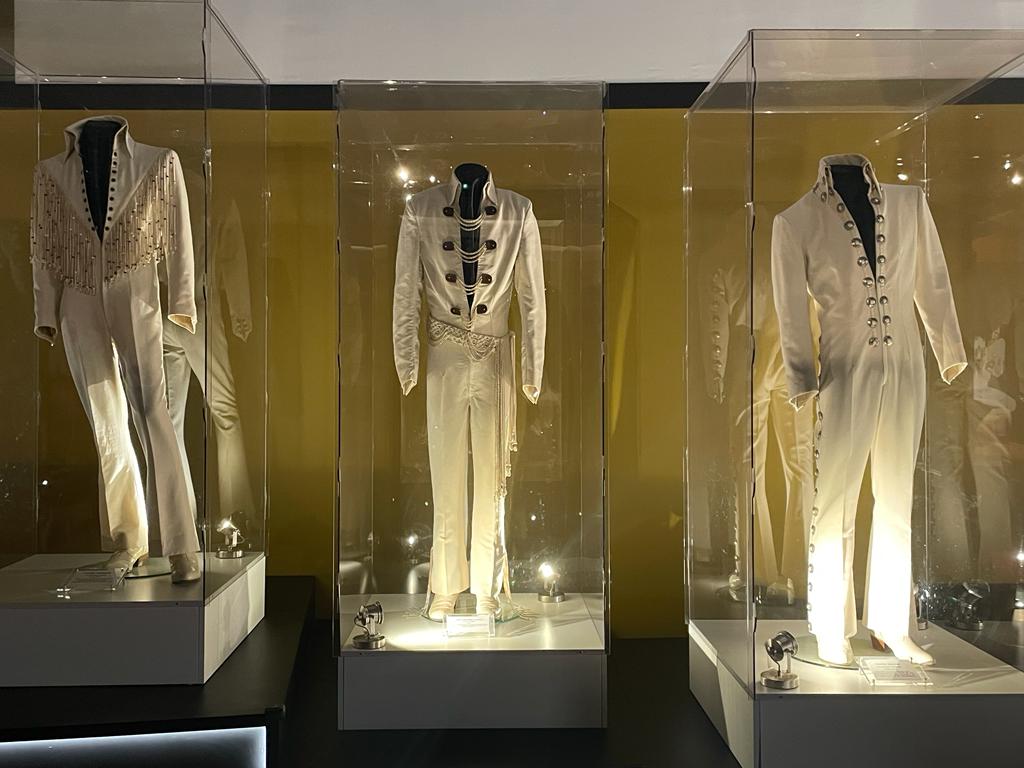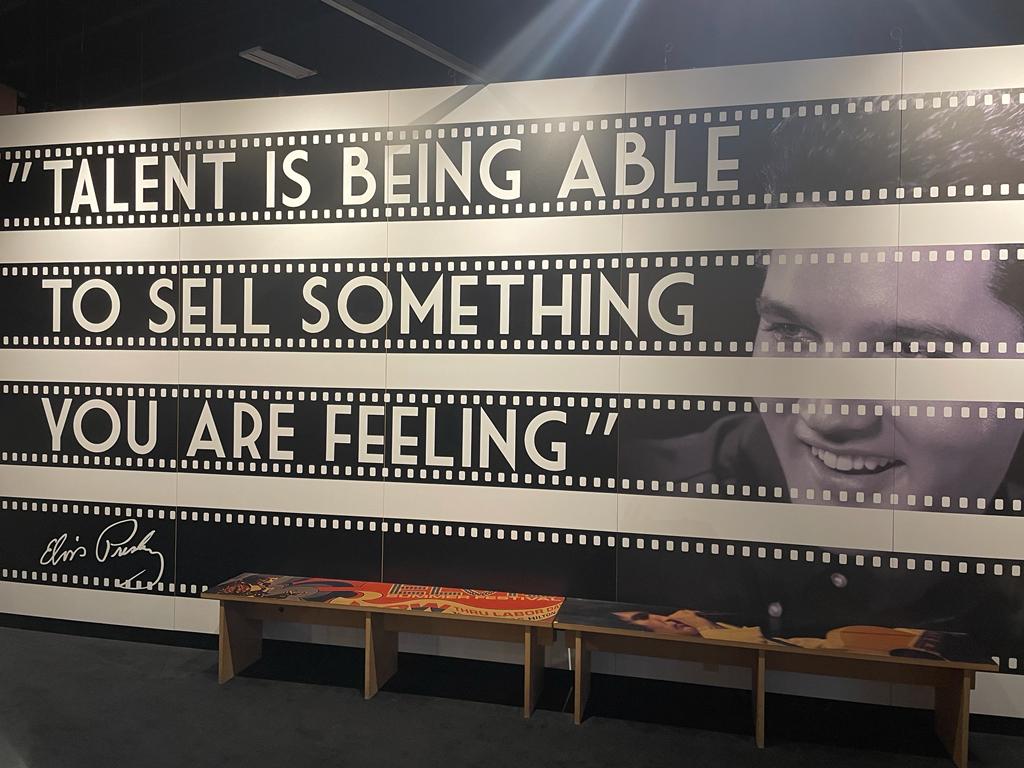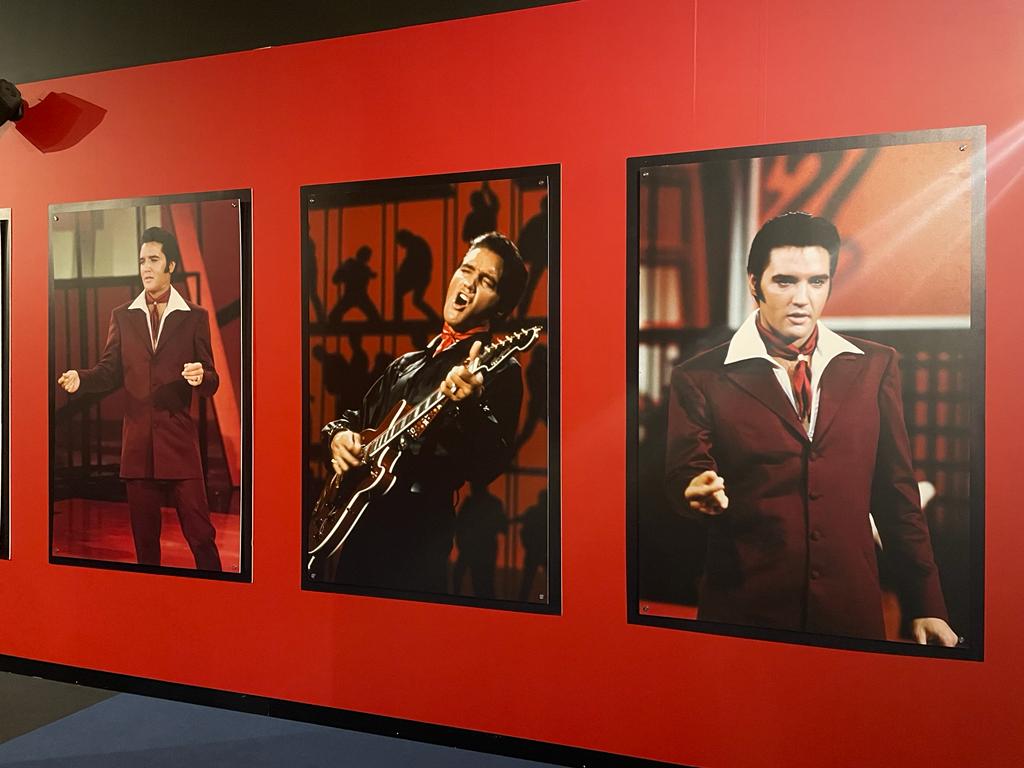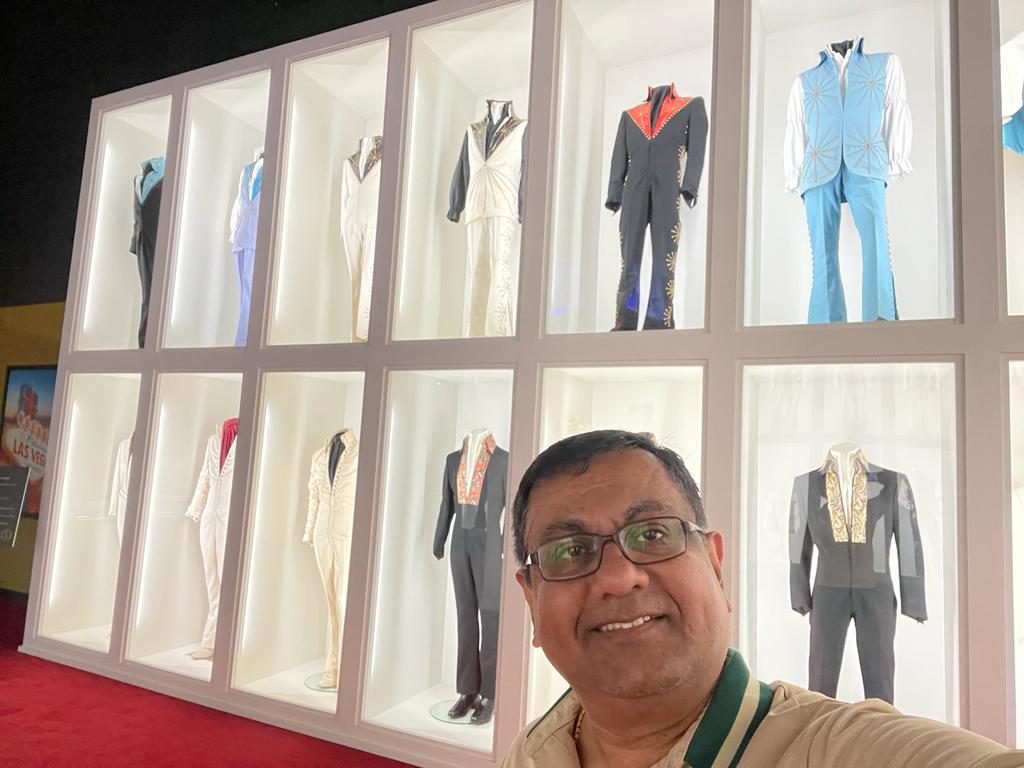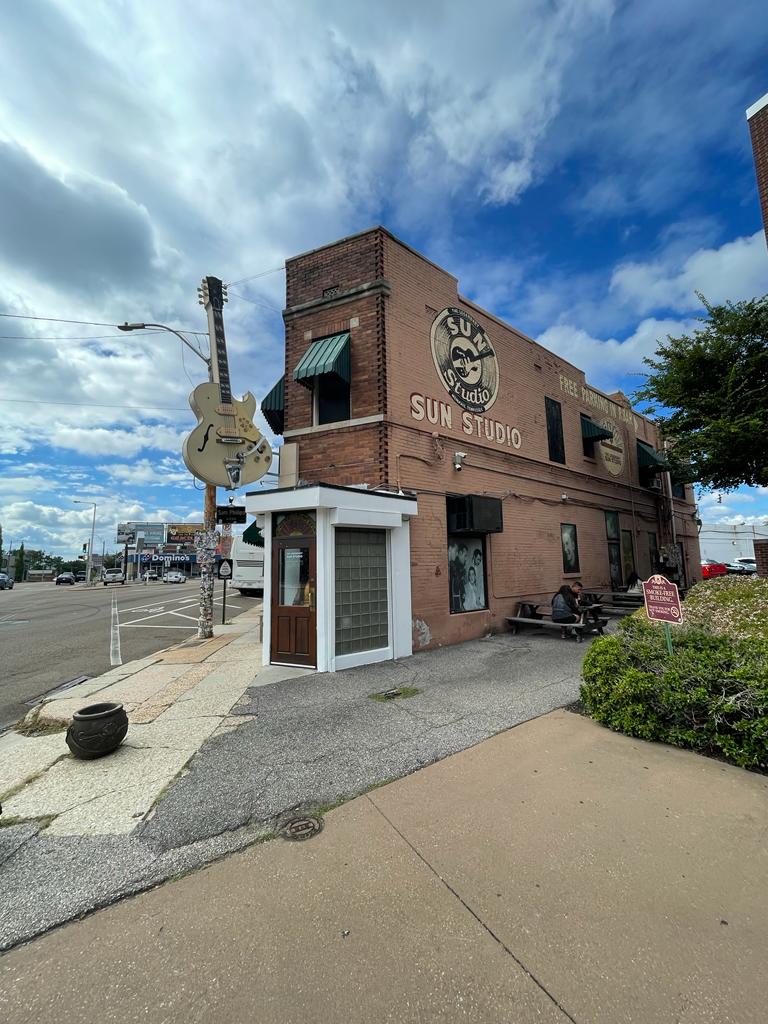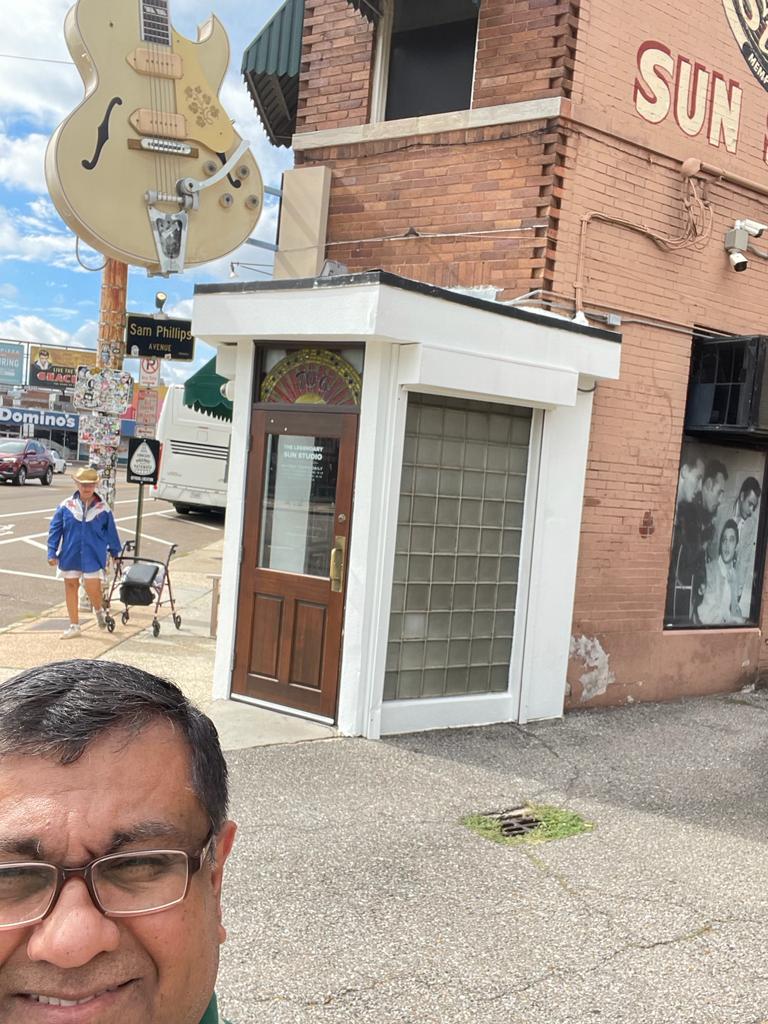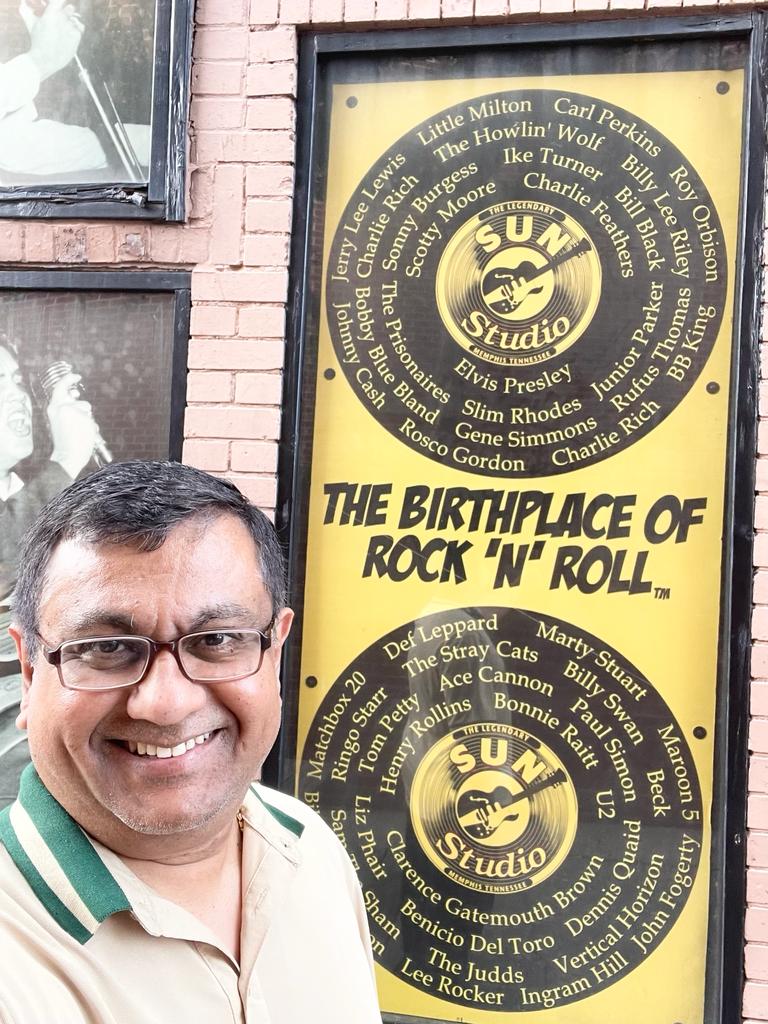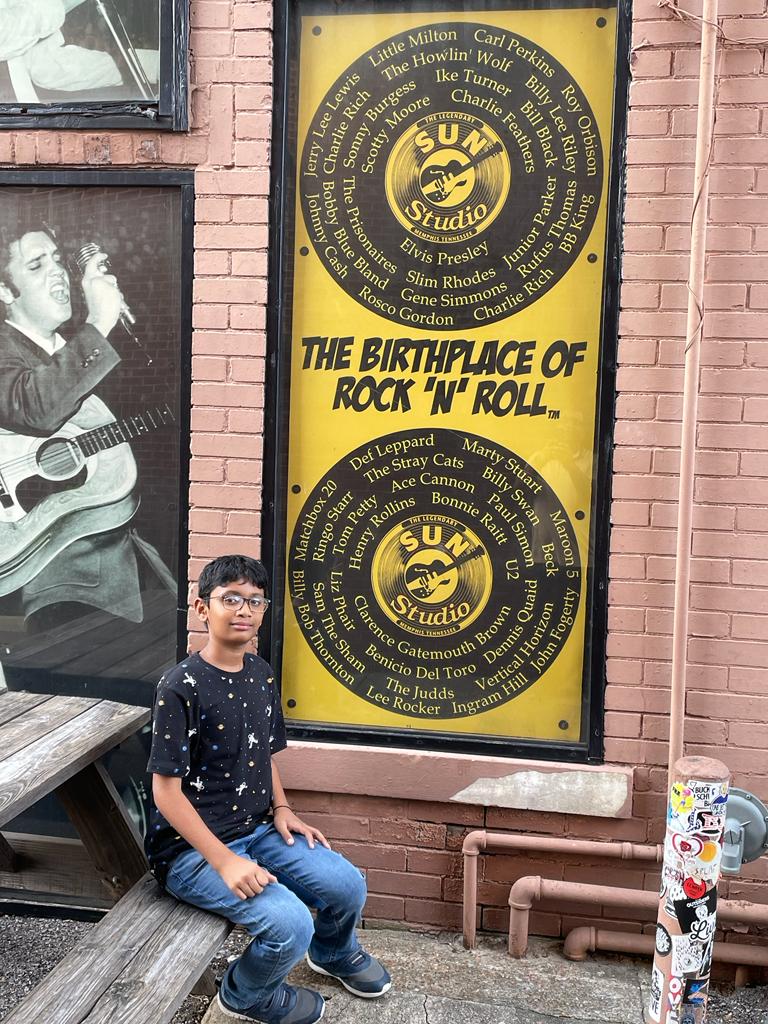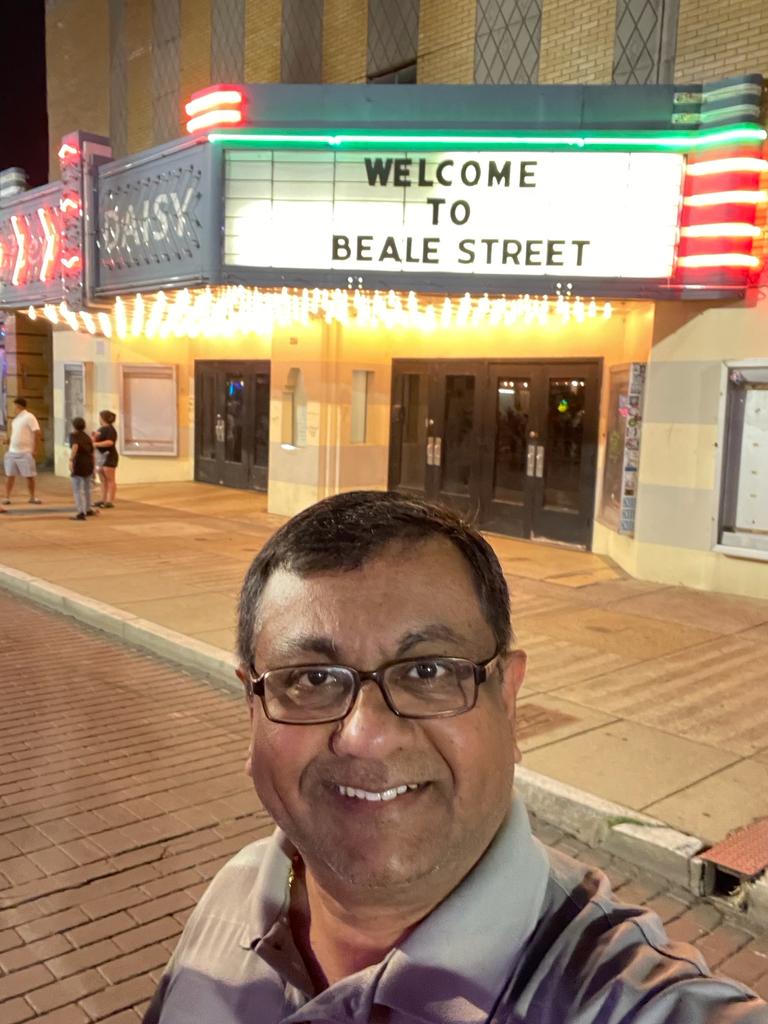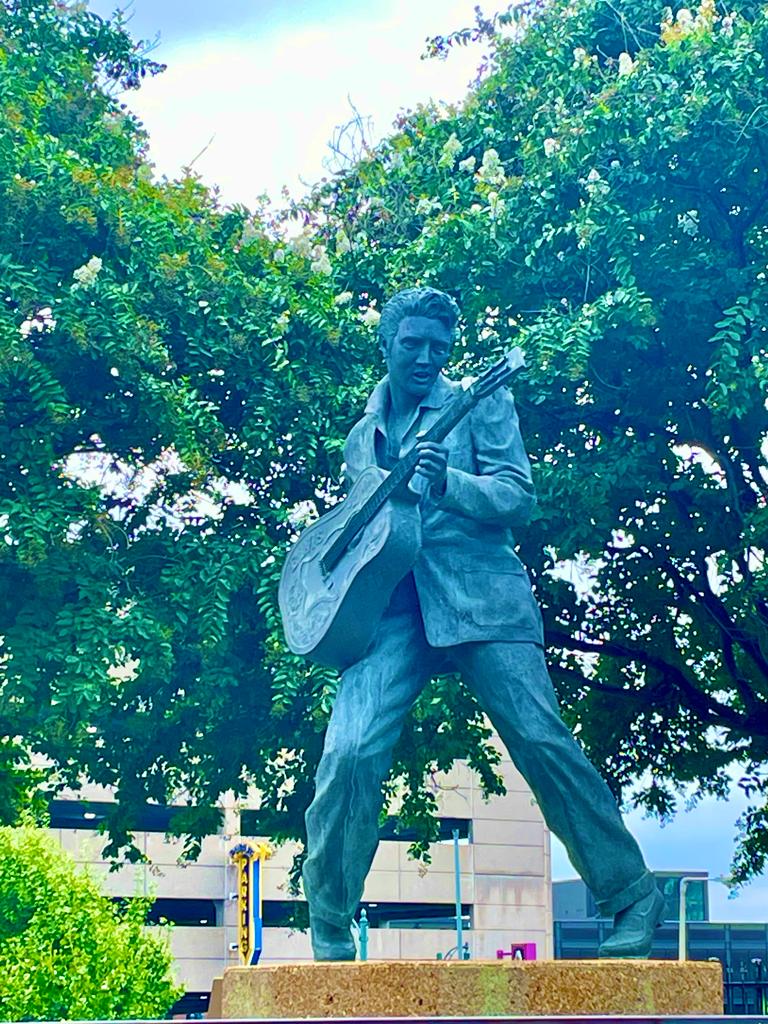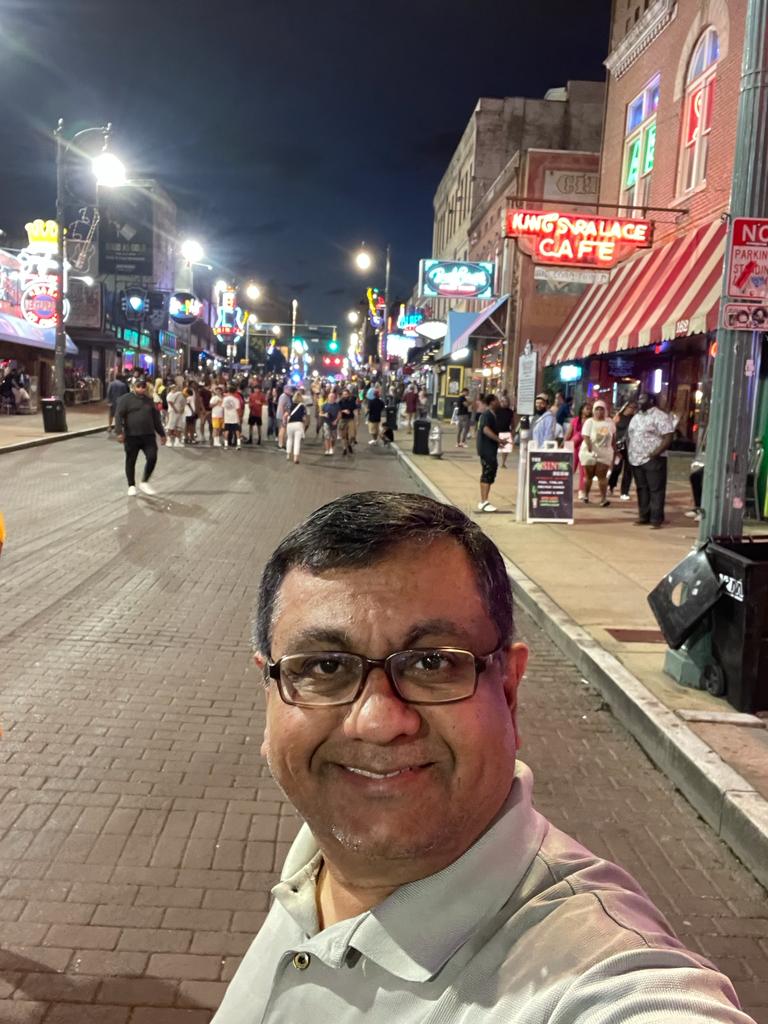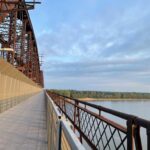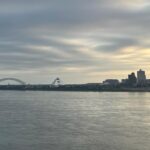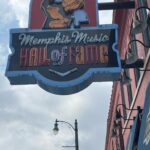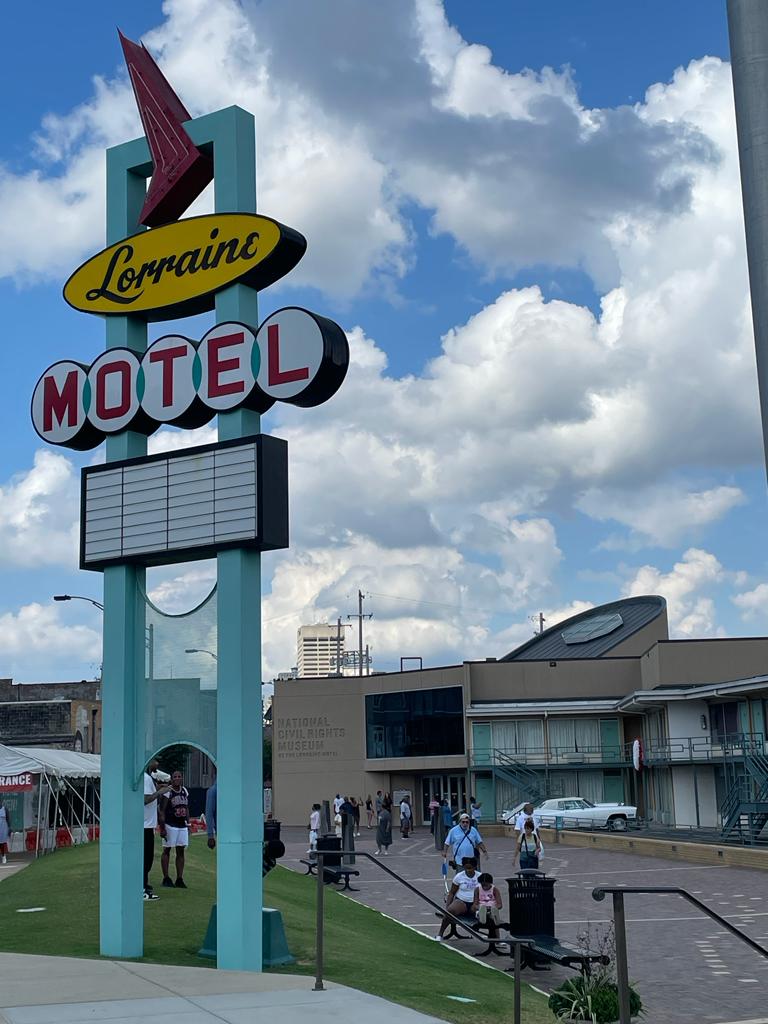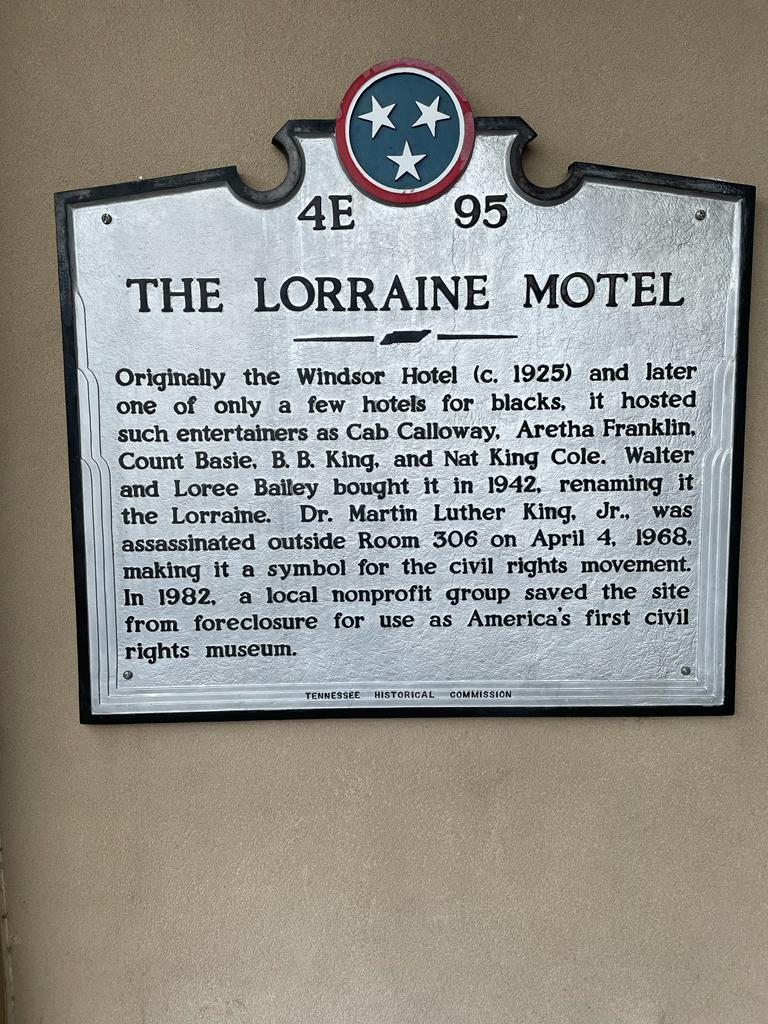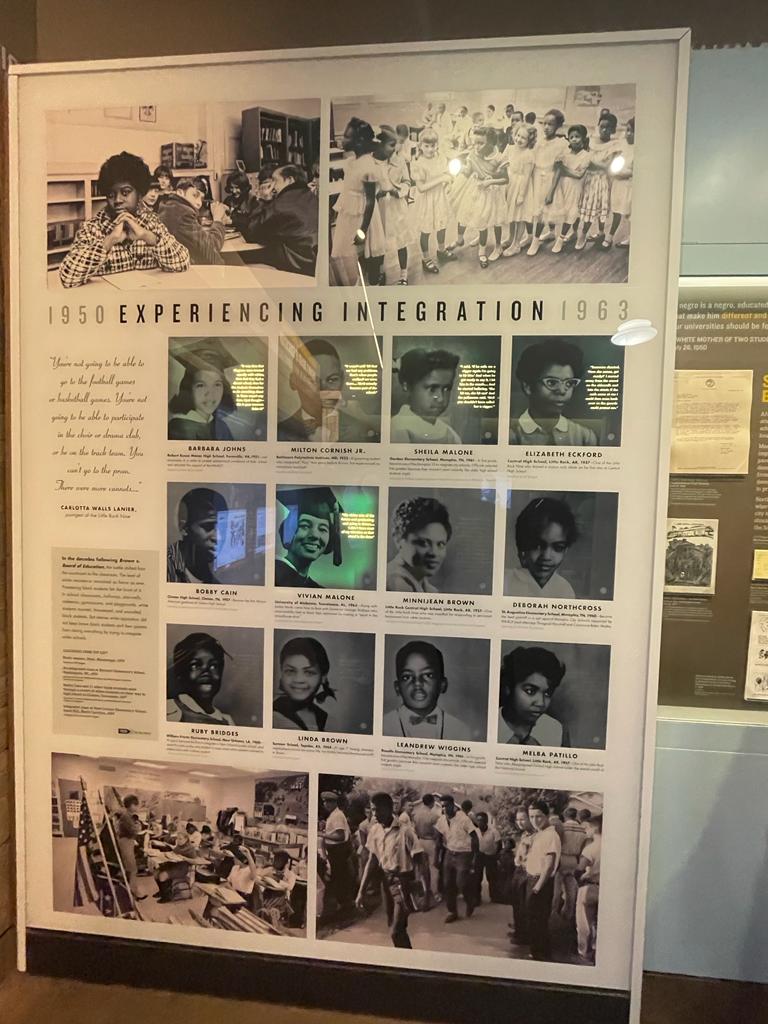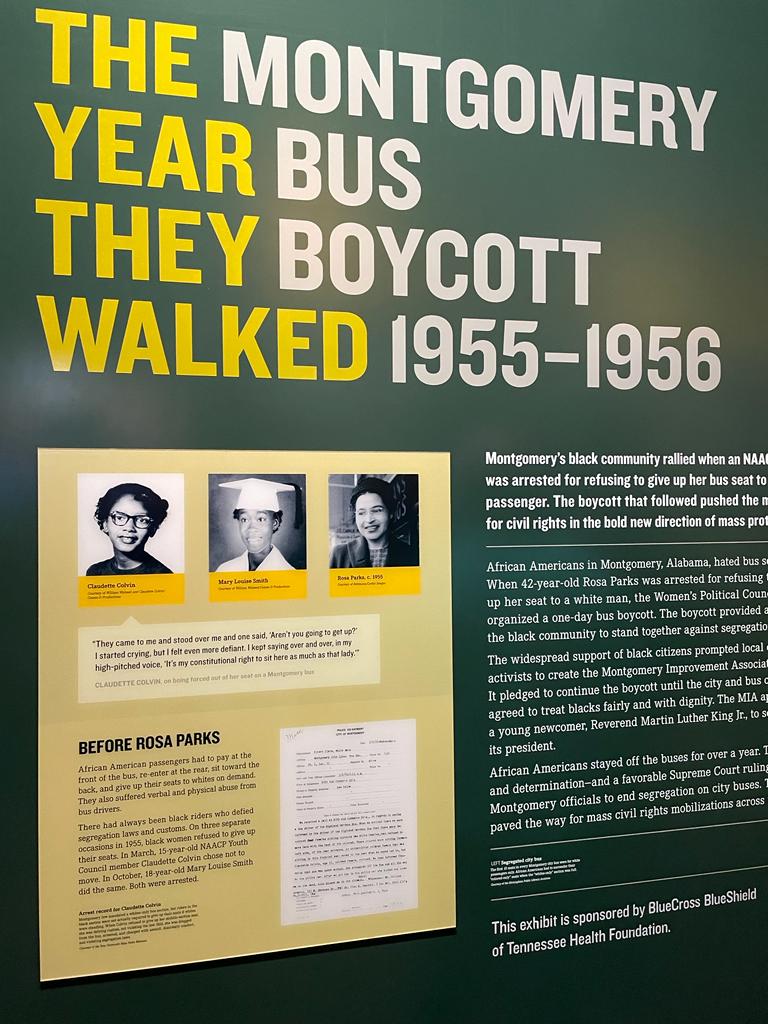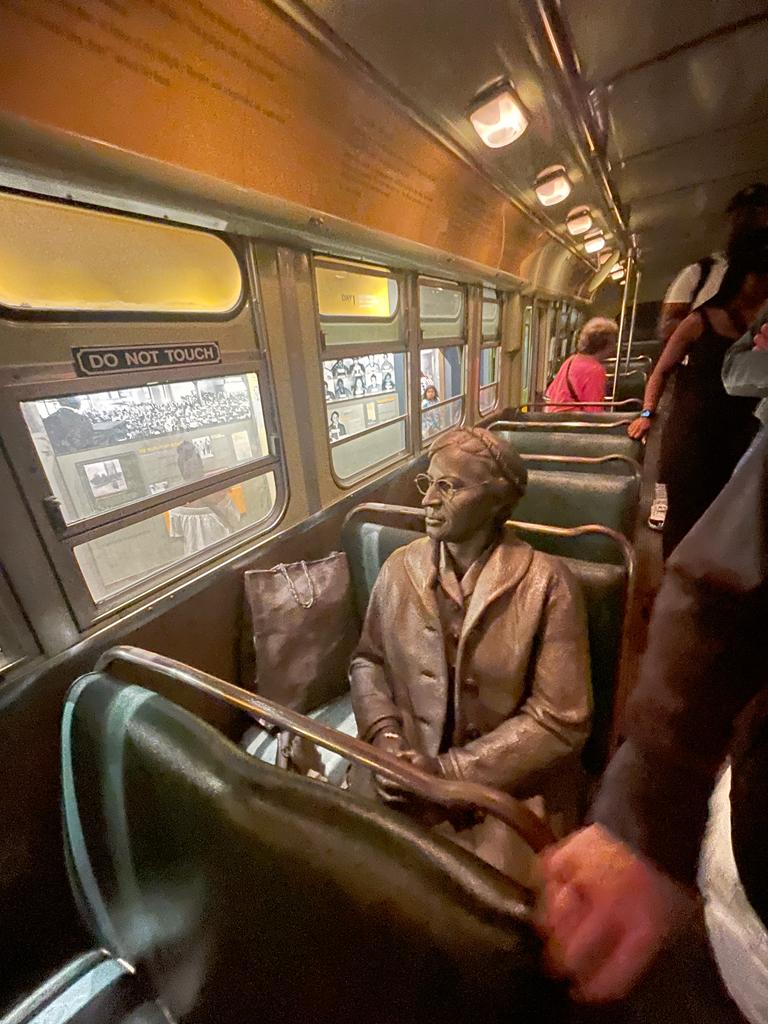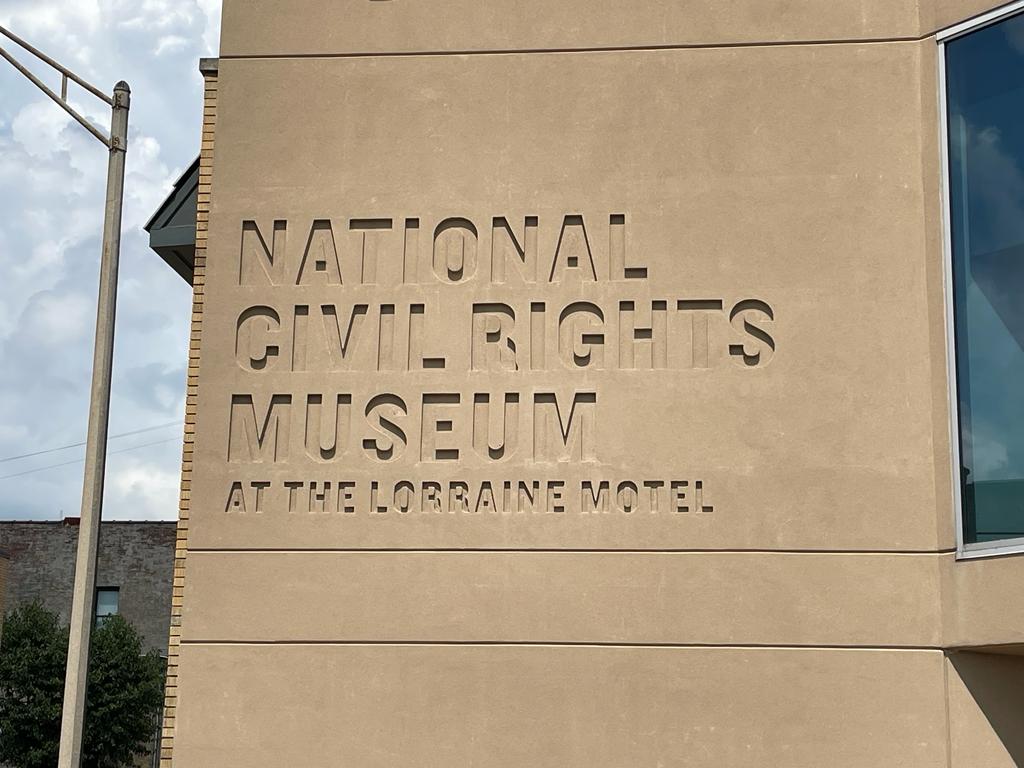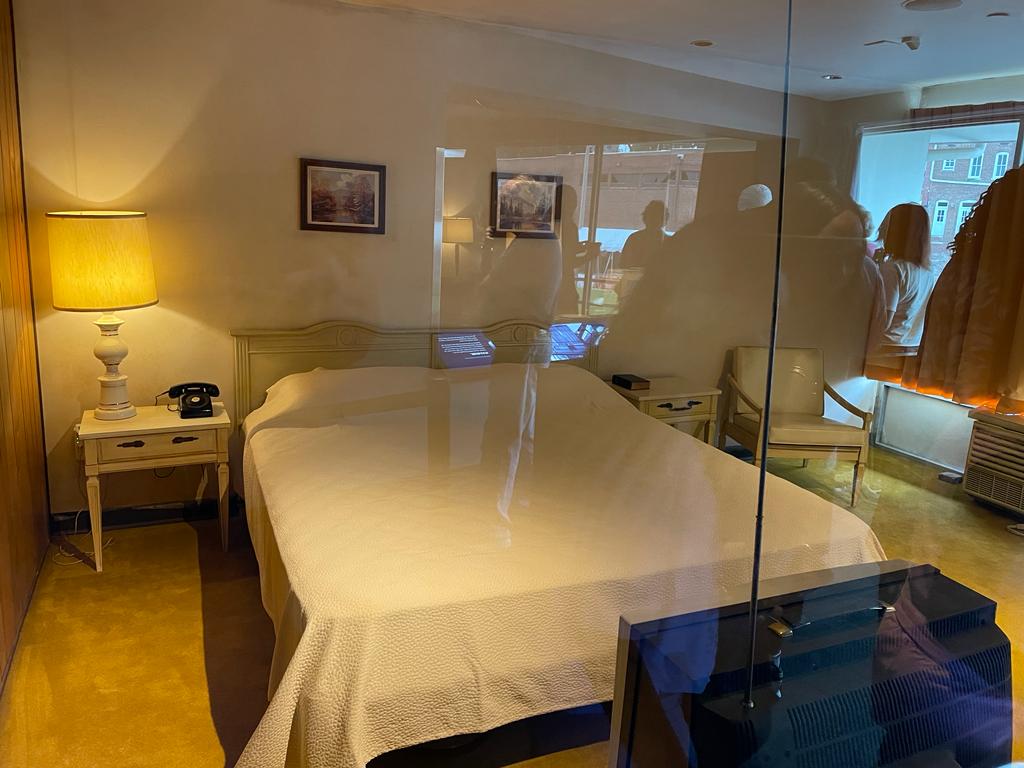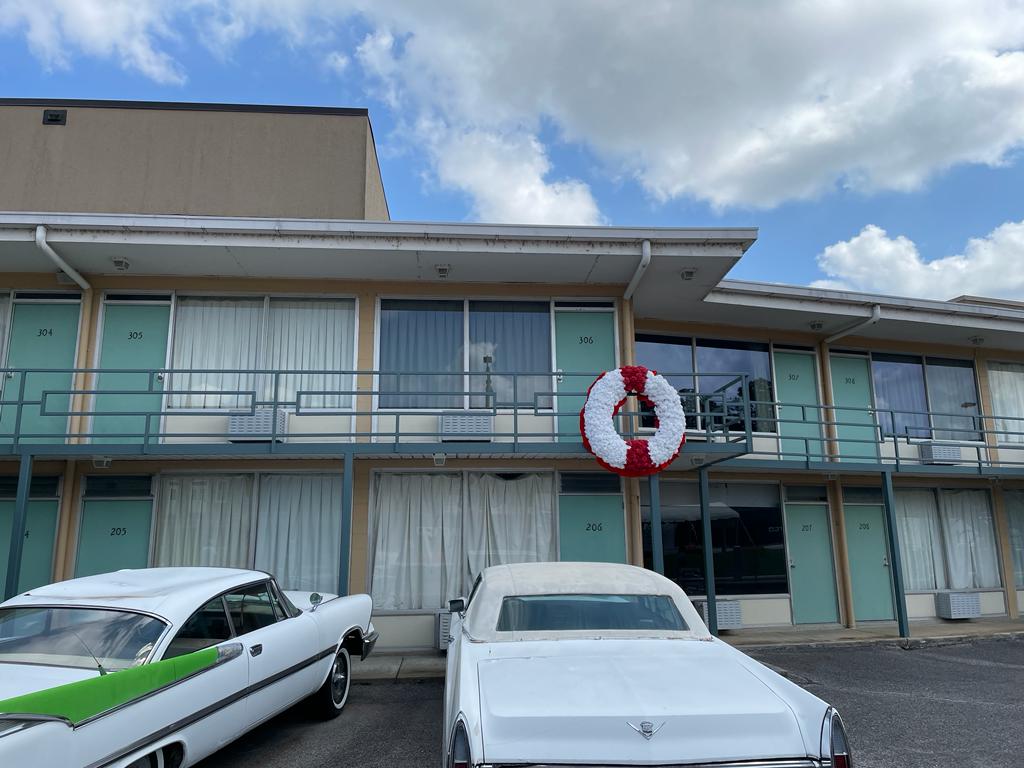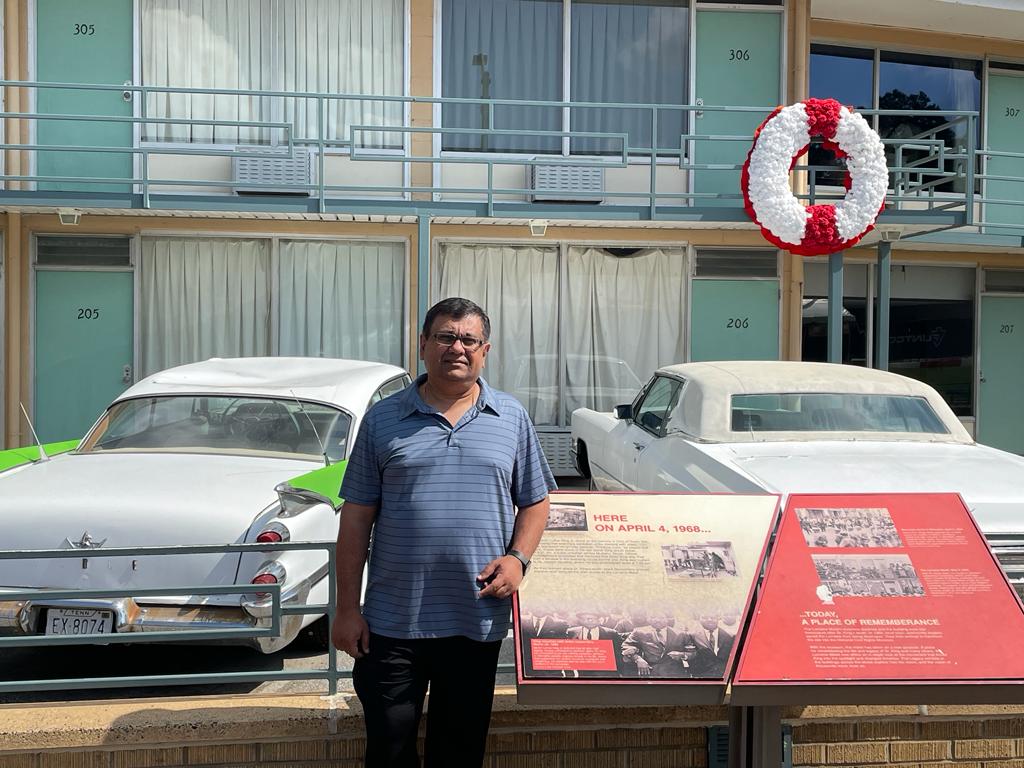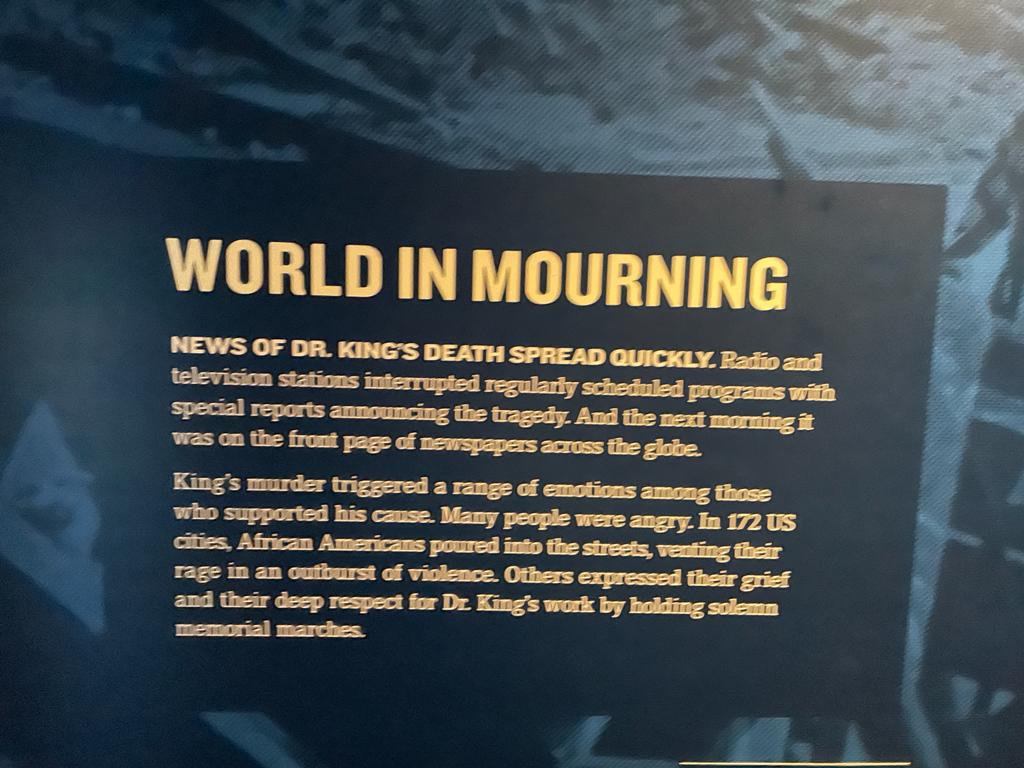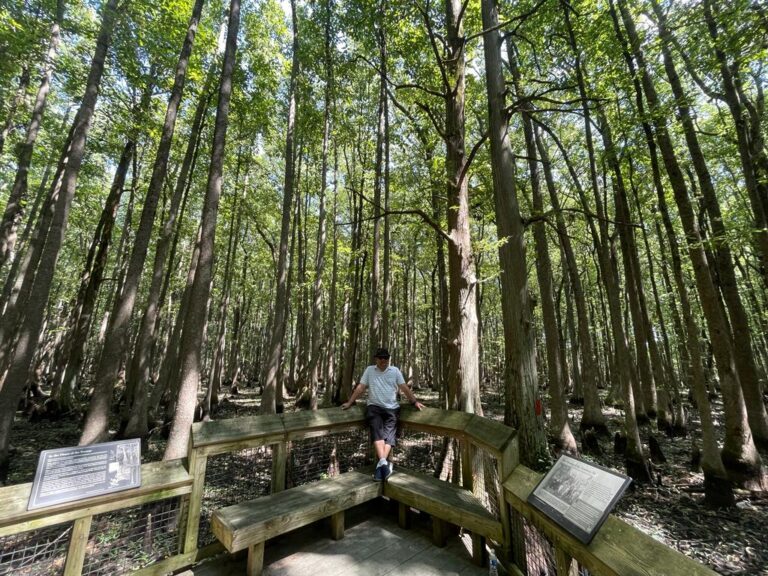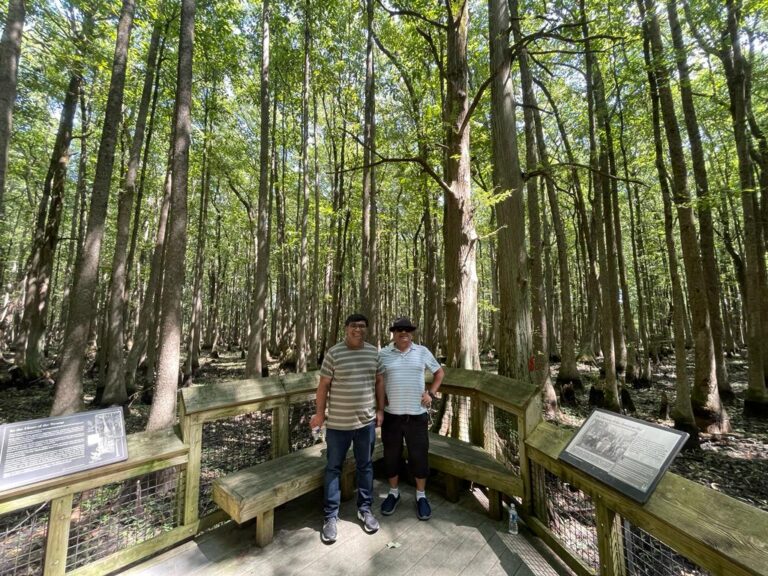Memphis, Tennessee
Walking in Memphis
Put on my blue suede shoes
Touch down in the land of the Delta blues
In the middle of the pouring rain
Yeah, I got a first class ticket
But I’m as blue as a boy can be…
For the first time, I heard and got curious about Memphis during the 1992 Grammy Awards ceremony broadcast on TV. The Best New Artist Award was won by Marc Cohn for his song – Walking in Memphis. While listening to its catchy melody and soulful lyrics I heard names like – Delta Blues, Beale Street, W. C. Handy, Graceland, BB King and Elvis. Everyone knew who Elvis Presley was, but the other names were totally new to me. Years later in the summer of 2023, I had an opportunity to visit Memphis, along with my good friend Sathish and his family.

The name Tennessee comes from a Cherokee tribe located at a village site called Tanasse. The State is named for its principal river, which has been interpreted as meaning “bend in the river”. The city of Memphis was discovered by the rest of the world largely via the works of Beale Street-based bandleader W. C. Handy, who began using blues motifs in his compositions shortly after encountering the music in the Mississippi Delta around 1903. With Gospel music, plus Handy’s artistry and management of musicians, the best Blues artists soon trekked to Beale Street. Memphis was where every important musician of the South gravitated, and which supported a large musical community where every style of African American music could be found. Thus, Memphis flourished as the first widely identified “Home of the Blues” and W.C. Handy earned the title “Father of the Blues”.
In the late 40s and 50s lots of blues musicians settled in Memphis, many among them went on to become legends. In 1947, one such musician by the name Riley B. King hitchhiked to Memphis, TN, to pursue his music career. His phrasing, his vibrato and bends, the timbre of his notes and his deep soulful voice made his very popular. He was often referred as Beale Street Blues Boy which later became his stage name and he became world famous by the name BB King. It was one later in 1947 when a 13-year-old boy from Nashville named Elvis Presley also moved to Memphis with his parents. The rest is history as they say.
My visit to Memphis happened on the Labor Day weekend of 2023. It was an 8-hour drive north-east from Dallas. We drove across the Natural State – Arkansas, before crossing ‘The Old Man’ – the mighty Mississippi River into Tennessee state. We started on a Friday evening and took a 5-hour drive towards Little Rock, Arkansas which was our stop for the night. Little Rock is a small city of around 200,000 population on the banks of banks of Arkansas River (which is a major tributary of Mississippi River). Little Rock is the hometown of the 42nd President of United States – Bill Clinton. But unfortunately, the city has also gotten itself into the list of top US cities with highest crime rates lately.
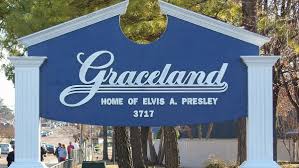
Next day after an early breakfast we continued our journey towards Memphis. Our first stop was one of the most visited places in US and maybe the second most famous house in US after White House. It was the house of the King, Elvis Presley called Graceland. After growing up in humble surroundings, Elvis bought Graceland in 1957, an year after his super-stardom including historic television appearances, record breaking live performances in front of sell-out crowds and an armload of awards. It is a magnificent property spread across 14 acres of land and he lived there for 20 years until his untimely death in 1977, at the age of 42. The estate was opened to public in 1982.
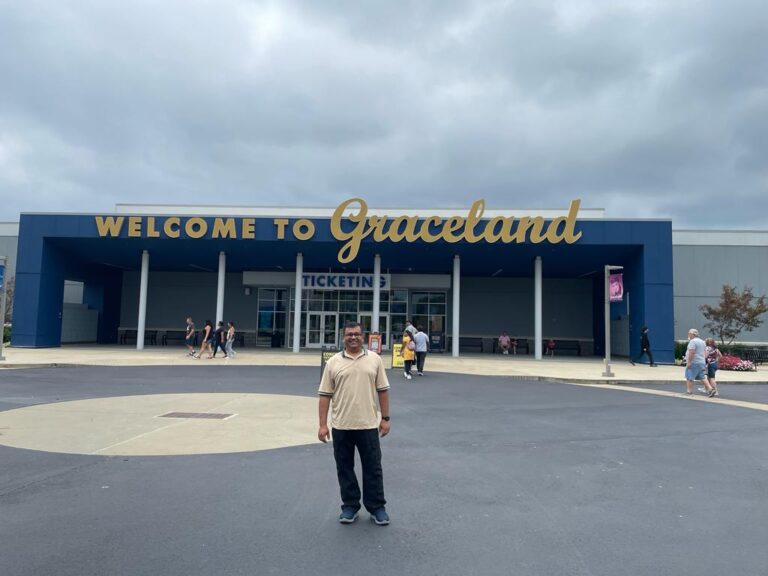
As you enter the majestic property, you are reminded how big a name Elvis is in American History and how the public still adore him. His larger-than-life photos of stage performances dominate the walk ways and walls of the estate, with his famous songs always playing in the background. The entry tickets to the property are a bit pricey but you can select which all areas of Graceland you want to see and plan your visit accordingly. The thing that impressed me the most was how organized the entire estate was. The entire compound has been divided into different sections depicting his early life, musicians who influenced him, his struggling period as a young singer, his rise to stardom, his most famous performances, his mansion, his wardrobe collection, his automobiles and airplanes, his military life etc. At every turn in the property, we could see people, especially senior citizens dancing to the music being played. I am sure it would be bringing back great memories from their younger days when Elvis stole the hearts of the American public.
From Graceland we went to Sun Studio which is in Downtown Memphis. Sun Studio is where it all started for Elvis and went on to record many of his initial songs. They have a very organized and informative tour of the studio where we get to know the history of the place and about the legends who walked through its doorsteps.
Late in the evening we went to the Home of Blues – Beale Street. It a 2-mile street running from the Mississippi River to East Street. The street is lined up with Blues clubs and restaurants like Hard Rock Café, BB King’s Blues Club, Coyote Ugly, all famous for their Memphis BBQ and are major tourist attraction now. The first statue of Elvis as erected on Beale Street in 1982. But it proved too delicate for the elements and souvenir-crazed fans, who stripped its guitar strings and tore the tassels from Elvis’s suit. So, a new statue was put up in 1997, unlike the original, showing him as he would have looked on Beale Street circa 1955, wearing a stage outfit he might have bought at Lansky Bros. down the block. Although designed to be sturdier than the previous statue, it’s also kept at a distance from the public behind an encircling fence.
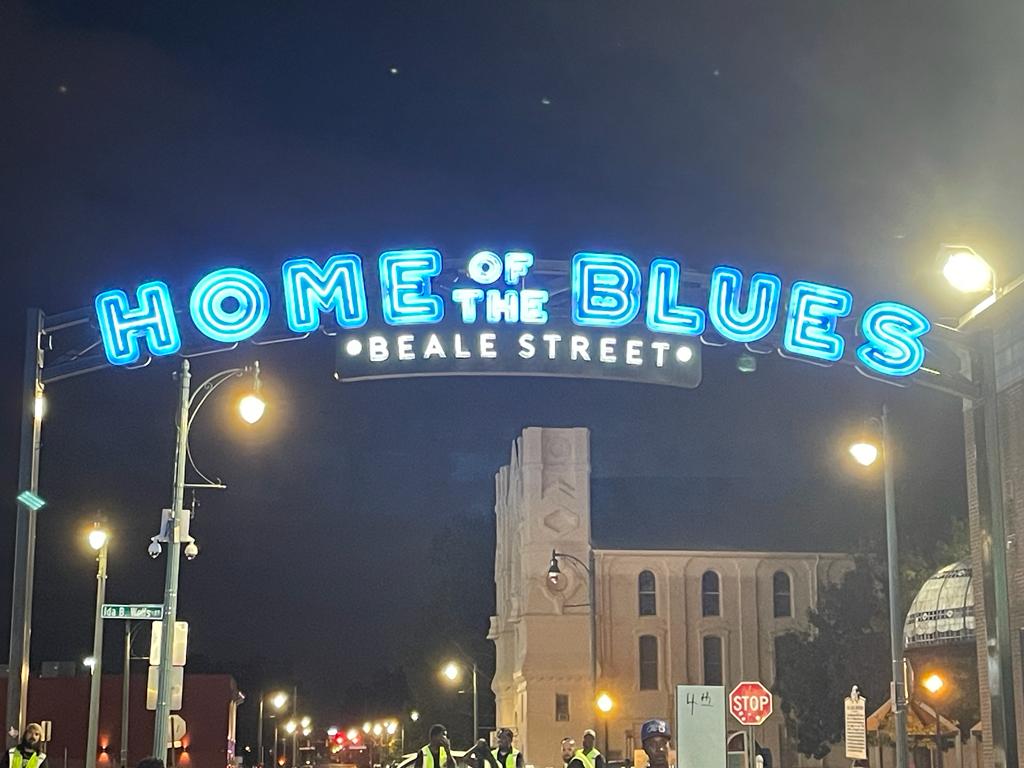
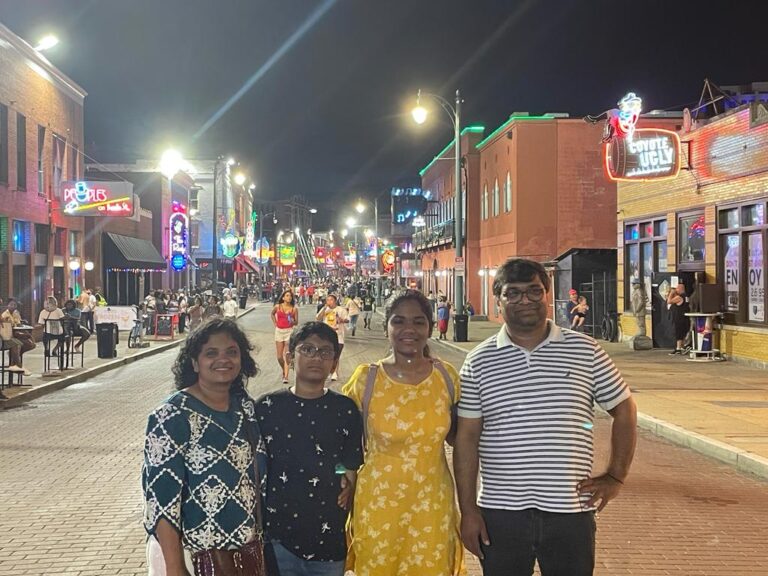
The next day morning before sunrise we went to see the bridge that connects Tennessee and Arkansas states over Mississippi River. The bridge is the longest railway/pedestrian bridge across Mississippi River and is aptly called as the Big River Crossing. It was a one mile walk and seeing the sunrise from top of the bridge was a great experience. It is a great place to get a spectacular view of the river and downtown Memphis skyline.
From the Hall of Fame, we went directly to another of Memphis most significant museum – one which signifies a dark day in American Civil Rights history – National Civil Rights Museum. The museum is set-up at the Lorraine Hotel which was the site of 1968 assassination of the Civil Rights leader and spokesman Martin Luther King Jr. The museum offers a lot of artifacts, more than 40 new films, oral histories, interactive media and external listening posts that guide visitors through five centuries of history — from the beginning of the resistance during slavery, through the Civil War and Reconstruction of modern American society.
The museum is divided into various sections depicting the global impact of slavery. Entering the circular gallery, we walk on a floor map of North and South America, Europe and Africa. Illuminated channels provide statistics and information about the Atlantic slave trade, including the massive number of people captured, goods cultivated and wealth created. In one of the museum’s original exhibits, visitors can hear audio that’s triggered by entering replica of the bus in which Rosa Parks travelled. Three-dimensional figures are positioned on the sidewalk to indicate the significance of the women of Montgomery, who sustained the boycott. Dr. Martin Luther King Jr. is highlighted as an emerging leader of the movement, with audio of his speech delivered the first night of the boycott. The museum also explains the story of the 1968 Memphis sanitation strike. New videos feature Rev. James Lawson and T.O. Jones, who courageously waged the battle on behalf of striking sanitation workers. The iconic strikers with the “I Am a Man” signs and the garbage truck from the original exhibition are here. Film documenting the sanitation strike is projected upon the garbage truck. New to the exhibit is the Mountaintop Theatre, showing the powerful “Mountaintop” speech, the last one Dr. King gave the evening before he died.
The second-floor balcony of Room 306 where Dr King was shot is also open to public. It’s one thing to read about history in a book, another to watch a documentary or film, and to be up close and personal is a whole other thing altogether. It was surreal in its preservation. The room is as it was, with a rotary telephone, ’50s-style lamps, small television with antenna, old-fashioned salt and pepper shakers, and what looks like those old-school big local telephone directories. There was also a food tray on a table.
After seeing these museums and its exhibits anger and sadness rose up for sure. The slavery exhibit got me going. It’s not like I hadn’t seen movies about slavery, but life-size figures, with pained faces, in chains, sitting inches from each other for a long, long journey felt eerily real. Then there were the depictions of violence in photos, oral histories, and panels of text. Reading them breaks your heart. It was tough to sort out my emotions, to squash that discomfort that comes when you get mad and you can’t do much about it. You know you can’t hate today for past sins committed by folks no longer walking the earth. So you suck it up, stuff it down, and keep moving with a heavy heart.
Our last leg of Memphis trip was a visit to the Louisiana Purchase State Park. It is in the state of Arkansas around 90 miles from Memphis towards Dallas. It is an important place in history, as this National Historic Landmark preserves the initial point from which all surveys of property acquired through the Louisiana Purchase of 1803 originated. An elevated boardwalk above the surrounding headwater swamp leads to the granite monument marking the survey’s starting point. Wayside exhibits tell the story of the Louisiana Purchase, which opened up the American West. Other panels interpret the lowlands and its native flora and fauna.

